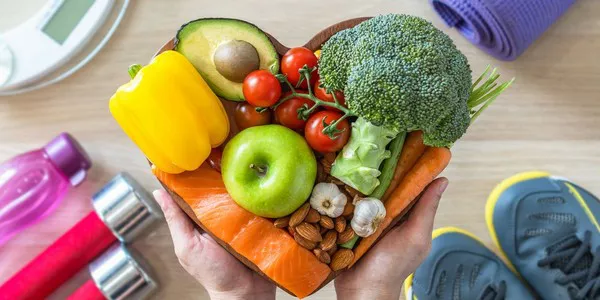High blood sugar, also known as hyperglycemia, occurs when the body has too much glucose circulating in the bloodstream. For individuals managing conditions like diabetes, it’s crucial to maintain stable blood sugar levels through diet and lifestyle choices. While certain foods can help regulate blood sugar, others can cause significant spikes, posing risks to health. Understanding what not to eat with high blood sugar is essential for effective management and prevention of complications.
The Role of Diet in Managing Blood Sugar
Diet plays a pivotal role in managing blood sugar levels, particularly for those with diabetes or insulin resistance. The goal is to consume foods that have a minimal impact on blood glucose while providing essential nutrients. The primary focus is on controlling carbohydrate intake since carbohydrates have the most significant effect on blood sugar levels.
Carbohydrates are broken down into glucose during digestion, leading to an increase in blood sugar. However, not all carbohydrates are equal in their impact. Simple carbohydrates, like those found in sugary foods and refined grains, cause rapid spikes in blood sugar. On the other hand, complex carbohydrates, such as whole grains, legumes, and vegetables, are digested more slowly, resulting in a gradual increase in blood glucose levels.
In addition to carbohydrate management, dietary fat and protein also influence blood sugar regulation. Including healthy fats and lean proteins in meals can help slow down the absorption of glucose, preventing sudden spikes. Balancing macronutrients and making wise food choices are fundamental strategies in controlling high blood sugar.
Foods to Avoid with High Blood Sugar
1. Sugary Beverages: One of the most significant contributors to high blood sugar is sugary drinks like sodas, fruit juices, and sweetened teas. These beverages are loaded with rapidly absorbable sugars that can cause a rapid increase in blood glucose levels.
2. Sweets and Desserts: Foods high in refined sugars, such as candies, pastries, cakes, and cookies, should be avoided. They lead to sharp increases in blood sugar and provide minimal nutritional value.
3. White Bread and Refined Grains: White bread, white rice, and other refined grains lack fiber and essential nutrients. They are quickly broken down into sugar in the body, causing blood sugar levels to spike.
4. Processed Snacks: Packaged snacks like chips, crackers, and pretzels often contain high levels of unhealthy fats, refined carbohydrates, and added sugars, all of which can disrupt blood sugar control.
5. Sweetened Breakfast Cereals: Many breakfast cereals are loaded with sugar, even those marketed as healthy options. Opt for whole-grain cereals with minimal added sugars instead.
6. Fried Foods: Fried foods are typically high in unhealthy fats, which can lead to insulin resistance over time. Avoid fried foods and opt for healthier cooking methods like baking, grilling, or steaming.
7. High-Sugar Condiments: Condiments like ketchup, barbecue sauce, and sweet chili sauce can contain surprisingly high amounts of sugar. Opt for sugar-free or low-sugar alternatives.
8. Dried Fruits: While fruits are generally healthy, dried fruits are concentrated sources of sugar and can cause rapid spikes in blood glucose levels. Moderation is key when consuming dried fruits.
9. Alcohol: Alcohol can interfere with blood sugar levels, especially when consumed in large quantities or on an empty stomach. It’s important for individuals with high blood sugar to limit alcohol intake and monitor its effects.
Crafting a Balanced Diet for Blood Sugar Control
Avoiding certain foods is only one part of managing high blood sugar. Equally important is crafting a well-rounded, balanced diet that supports overall health and stable blood sugar levels. Here are key principles to follow:
1. Emphasize Whole Foods: Base meals around whole, unprocessed foods such as vegetables, fruits, whole grains, legumes, nuts, seeds, and lean proteins.
2. Choose Low Glycemic Index Foods: Opt for foods with a low glycemic index (GI), which means they have a slower effect on blood sugar levels. Examples include quinoa, sweet potatoes, and most vegetables.
3. Include Healthy Fats: Incorporate sources of healthy fats like avocados, nuts, seeds, and olive oil into meals. Healthy fats can help improve insulin sensitivity.
4. Prioritize Fiber: Fiber-rich foods like vegetables, fruits, whole grains, and legumes help slow down the absorption of glucose and promote satiety.
5. Monitor Portion Sizes: Even healthy foods can affect blood sugar levels if consumed in large quantities. Pay attention to portion sizes to avoid overloading on carbohydrates.
6. Stay Hydrated: Drinking plenty of water helps regulate blood sugar levels and supports overall health.
Conclusion
Managing high blood sugar requires a proactive approach to diet and lifestyle. By avoiding foods that cause sharp spikes in blood glucose levels and focusing on nutrient-dense, balanced meals, individuals canbetter regulate their blood sugar and reduce the risk of complications associated with hyperglycemia. Consulting with a healthcare provider or registered dietitian is recommended to develop personalized dietary strategies tailored to individual needs and health goals. With the right knowledge and choices, it’s possible to navigate high blood sugar effectively and promote overall well-being.
Related Topics:

























